Limp Bizkit Allianz Parque – São Paulo, Brazil
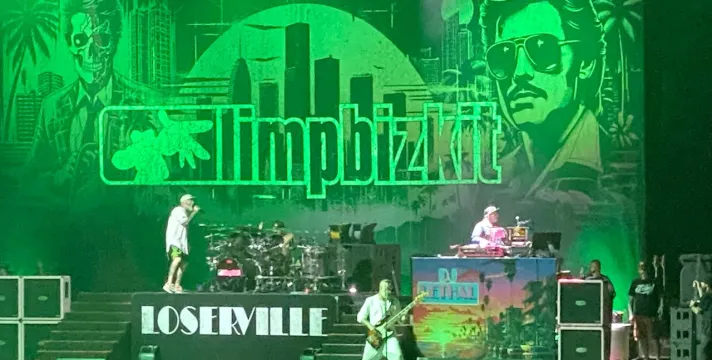

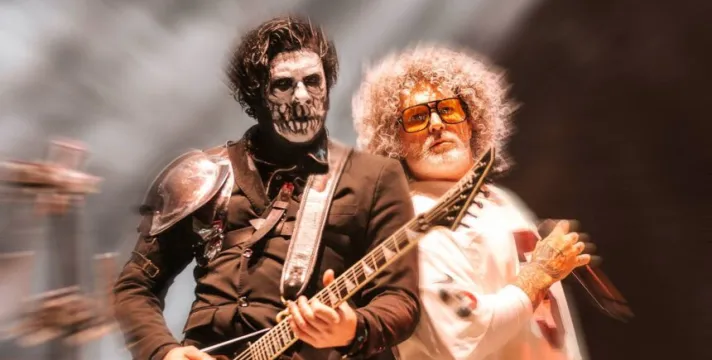

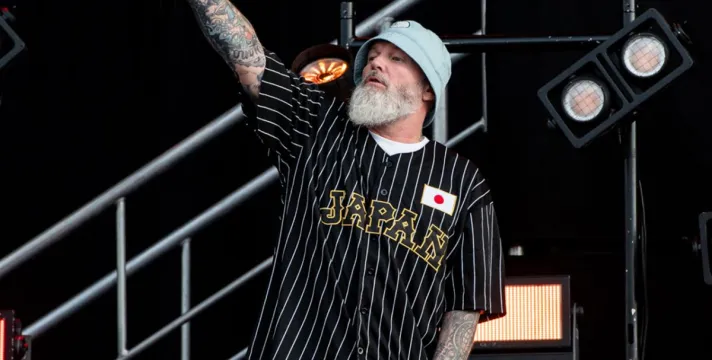
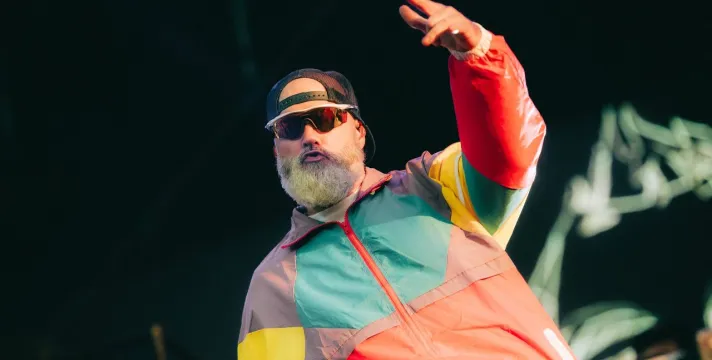
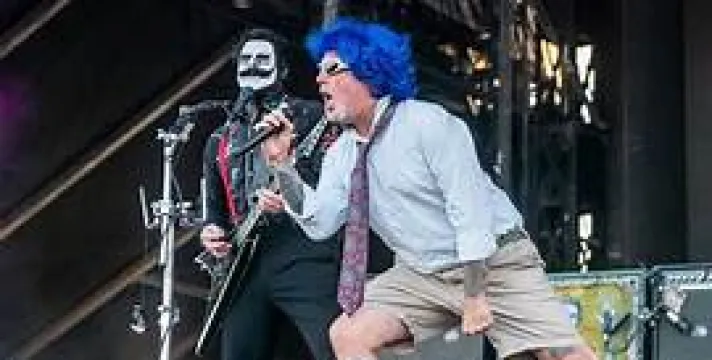
More information about the Package
Sure! Here's the same 4000+ character text about Limp Bizkit, translated into English:
Limp Bizkit is an American band formed in 1994 in Jacksonville, Florida, that rose to prominence in the late 1990s and early 2000s as one of the main representatives of the nu-metal movement. With a sound that blends heavy rock elements with hip hop, rap, and a provocative attitude, the band became an icon of a generation looking to express frustration, anger, and rebellion in a raw and direct way. Frontman Fred Durst, with his bold personality, backward red cap, and defiant stance, quickly became a central figure in the music scene of that time. The band also features the eccentric guitarist Wes Borland, whose theatrical appearance and unconventional playing style strongly contributed to the group’s unique identity. Completing the classic lineup are bassist Sam Rivers, drummer John Otto, and DJ Lethal, responsible for the electronic bases and scratches that give the band a hybrid sound between metal and hip hop.
From the beginning, Limp Bizkit stood out for their explosive energy on stage, aggressive lyrics, and a visual aesthetic that mixed urban culture with influences from skateboarding, punk, and 90s pop culture. Their debut album, released in 1997, served as an introduction of nu-metal to a broader audience, but it was their second record in 1999 that catapulted them to global stardom. Tracks with heavy riffs, catchy choruses, and lyrics marked by sarcasm and irreverence became anthems for a youth caught between skate culture, rap, and adolescent frustration. The following album further solidified their success, breaking sales records and packing arenas around the world. The band became a major draw at festivals like Ozzfest and toured with other acts from the same scene, such as Korn and Linkin Park.
Their massive success, however, did not come without controversy. The band was often criticized by more traditional music media, accused of representing a commercialized and exaggerated form of alternative metal. Fred Durst, in particular, was involved in numerous feuds with other artists and media outlets, which increased the group’s notoriety but also brought a constant wave of criticism. Still, their audience remained loyal, especially among young people who found in the band’s lyrics a way to vent their repressed emotions. This duality—critical rejection and popular devotion—became one of the band’s defining features.
Wes Borland left the band in the mid-2000s, which caused temporary changes in the lineup and impacted the quality and reception of subsequent releases. During that period, the band released an album that received a lukewarm response and faced a drop in popularity, partly due to the oversaturation of nu-metal in the market and the emergence of new musical trends. However, Borland’s return brought back the creative energy and distinctive visual flair of the group, and in the following years, they focused more on nostalgic tours and reissues, maintaining a loyal fanbase around the world.
Limp Bizkit became more than a band—they became a symbol of an era, a lifestyle, and a provocative attitude. Despite the criticism and career ups and downs, their influence remains evident in countless bands that came afterward, both in sound and in visual style and stage presence. The mix of heavy guitars, shouted vocals, and rapid-fire rhymes continues to attract new generations of fans rediscovering their catalog through digital platforms.
Throughout their journey, the group never tried to please everyone or follow trends. They always stayed true to their provocative essence, full of irony, theatricality, and sonic weight. This commitment to their own identity is perhaps what has kept them relevant for so long, despite the constant transformations in the music industry.
The band’s visual aesthetic—especially Wes Borland’s costumes, masks, and heavy makeup—combined with their aggressive stage presence and unpredictable live performances, helped cement their image as a band that doesn’t just play music but creates an experience. Their music videos and shows often felt like they were straight out of a parallel universe where chaos, dark humor, and emotional intensity collide. This theatricality has always been a fundamental part of the connection with their audience.
Despite the highs and lows, Limp Bizkit has continued to perform worldwide, playing festivals, exploring new ideas, and, most importantly, having fun with what they do. It’s precisely this blend of sarcasm, authenticity, and disregard for critics that made them one of the most iconic—and controversial—bands of the late 90s and early 2000s. Their discography is marked by moments of explosion, experimentation, and resistance to fleeting trends.
The band is also remembered for their ability to unite different crowds: fans of rap, metal, punk, and skateboarding found common ground at Limp Bizkit shows, where the shared energy mattered more than labels. This direct, almost tribal, connection with the live audience is still one of the band’s strongest points, refusing to become a museum piece and instead continuing to tour, provoke, and ignite stages around the world.
Limp Bizkit is both a cultural phenomenon and a symbol of artistic resistance within an industry that often seeks to standardize everything. With their excesses, noise, conflicts, and undeniable authenticity, the band remains a living reminder that music can, above all, be a collective scream—messy, honest, and full of attitude.
Event Name: Limp Bizkit
When does it happens?: 20/12/2025 ~ 20/12/2025
Where does it take place?: Allianz Parque – São Paulo, Brazil
Venue
Notes
Sure! Here's the same 4000+ character text about Limp Bizkit, translated into English:
Limp Bizkit is an American band formed in 1994 in Jacksonville, Florida, that rose to prominence in the late 1990s and early 2000s as one of the main representatives of the nu-metal movement. With a sound that blends heavy rock elements with hip hop, rap, and a provocative attitude, the band became an icon of a generation looking to express frustration, anger, and rebellion in a raw and direct way. Frontman Fred Durst, with his bold personality, backward red cap, and defiant stance, quickly became a central figure in the music scene of that time. The band also features the eccentric guitarist Wes Borland, whose theatrical appearance and unconventional playing style strongly contributed to the group’s unique identity. Completing the classic lineup are bassist Sam Rivers, drummer John Otto, and DJ Lethal, responsible for the electronic bases and scratches that give the band a hybrid sound between metal and hip hop.
From the beginning, Limp Bizkit stood out for their explosive energy on stage, aggressive lyrics, and a visual aesthetic that mixed urban culture with influences from skateboarding, punk, and 90s pop culture. Their debut album, released in 1997, served as an introduction of nu-metal to a broader audience, but it was their second record in 1999 that catapulted them to global stardom. Tracks with heavy riffs, catchy choruses, and lyrics marked by sarcasm and irreverence became anthems for a youth caught between skate culture, rap, and adolescent frustration. The following album further solidified their success, breaking sales records and packing arenas around the world. The band became a major draw at festivals like Ozzfest and toured with other acts from the same scene, such as Korn and Linkin Park.
Their massive success, however, did not come without controversy. The band was often criticized by more traditional music media, accused of representing a commercialized and exaggerated form of alternative metal. Fred Durst, in particular, was involved in numerous feuds with other artists and media outlets, which increased the group’s notoriety but also brought a constant wave of criticism. Still, their audience remained loyal, especially among young people who found in the band’s lyrics a way to vent their repressed emotions. This duality—critical rejection and popular devotion—became one of the band’s defining features.
Wes Borland left the band in the mid-2000s, which caused temporary changes in the lineup and impacted the quality and reception of subsequent releases. During that period, the band released an album that received a lukewarm response and faced a drop in popularity, partly due to the oversaturation of nu-metal in the market and the emergence of new musical trends. However, Borland’s return brought back the creative energy and distinctive visual flair of the group, and in the following years, they focused more on nostalgic tours and reissues, maintaining a loyal fanbase around the world.
Limp Bizkit became more than a band—they became a symbol of an era, a lifestyle, and a provocative attitude. Despite the criticism and career ups and downs, their influence remains evident in countless bands that came afterward, both in sound and in visual style and stage presence. The mix of heavy guitars, shouted vocals, and rapid-fire rhymes continues to attract new generations of fans rediscovering their catalog through digital platforms.
Throughout their journey, the group never tried to please everyone or follow trends. They always stayed true to their provocative essence, full of irony, theatricality, and sonic weight. This commitment to their own identity is perhaps what has kept them relevant for so long, despite the constant transformations in the music industry.
The band’s visual aesthetic—especially Wes Borland’s costumes, masks, and heavy makeup—combined with their aggressive stage presence and unpredictable live performances, helped cement their image as a band that doesn’t just play music but creates an experience. Their music videos and shows often felt like they were straight out of a parallel universe where chaos, dark humor, and emotional intensity collide. This theatricality has always been a fundamental part of the connection with their audience.
Despite the highs and lows, Limp Bizkit has continued to perform worldwide, playing festivals, exploring new ideas, and, most importantly, having fun with what they do. It’s precisely this blend of sarcasm, authenticity, and disregard for critics that made them one of the most iconic—and controversial—bands of the late 90s and early 2000s. Their discography is marked by moments of explosion, experimentation, and resistance to fleeting trends.
The band is also remembered for their ability to unite different crowds: fans of rap, metal, punk, and skateboarding found common ground at Limp Bizkit shows, where the shared energy mattered more than labels. This direct, almost tribal, connection with the live audience is still one of the band’s strongest points, refusing to become a museum piece and instead continuing to tour, provoke, and ignite stages around the world.
Limp Bizkit is both a cultural phenomenon and a symbol of artistic resistance within an industry that often seeks to standardize everything. With their excesses, noise, conflicts, and undeniable authenticity, the band remains a living reminder that music can, above all, be a collective scream—messy, honest, and full of attitude.
Our services and how to purchase
All service offers for the event Limp Bizkit are provided by companies with years of experience in tourism, whether they are transport, receptive or hotel companies.
Payment methods vary from: in cash to installments with or without credit card, reaching up to 12 installments of equal value, depending on the start date of your trip.
To purchase the package for Limp Bizkit is very simple, the first step is to register on our website and after validating your account, access our website logged in and follow the step by step:
- 1º Step - Select the Number of Passengers;
- 2º Step - Select Package Type; ranging from simple packages such as BUS TRIP, HOTELS and SHUTTLE to more complex trips the EXPERIENCE with several services already included in a single package.
- 3º Step – Choose Day or days of the event, festival or show you wish to attend.
After this selection of items, our system will search and present what we currently have available based on your choice.
Depending on your Package choices, additional services may still appear, such as: tickets, travel insurance, local transfers, among several other services offered by our providers, which can be contracted individually for each passenger in your purchase.
Just follow the step by step and customize your package, until the final payment step.
Still have questions about our packages?
Our service channels are always open to clarify your doubts before making your purchase through our Contact Form , Email or Whatsapp.

